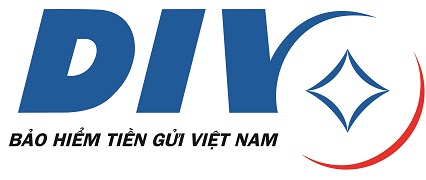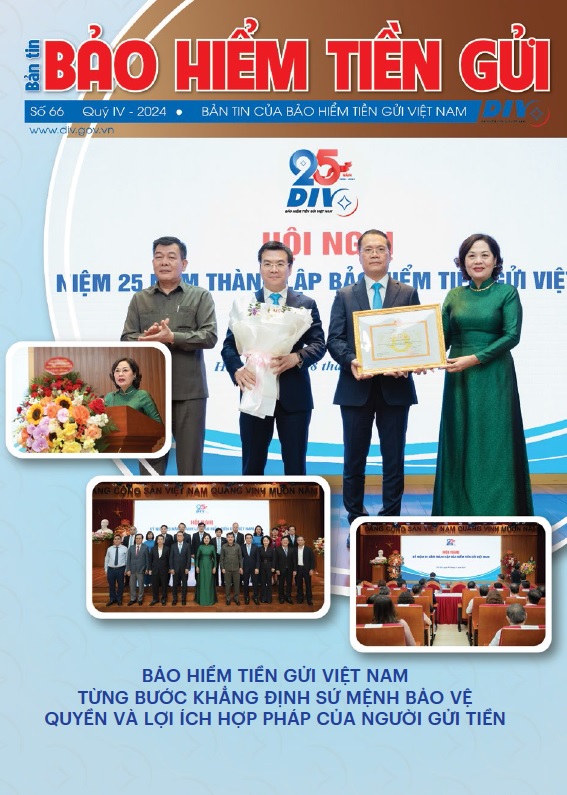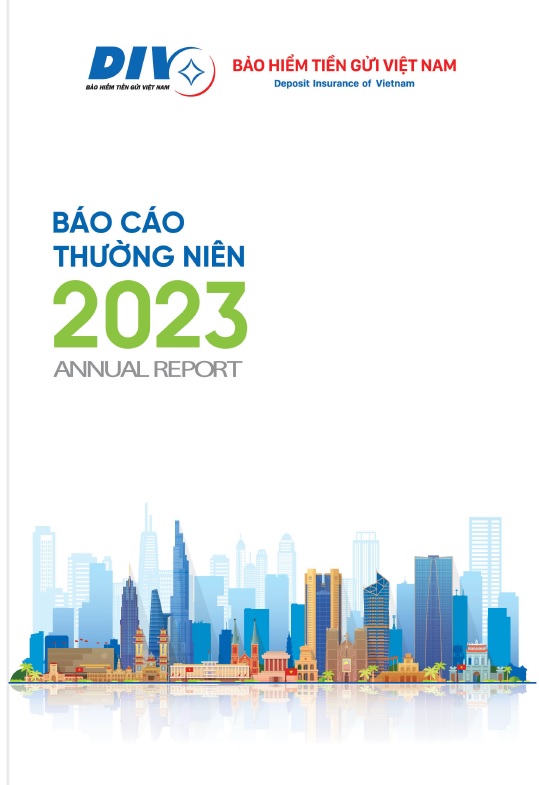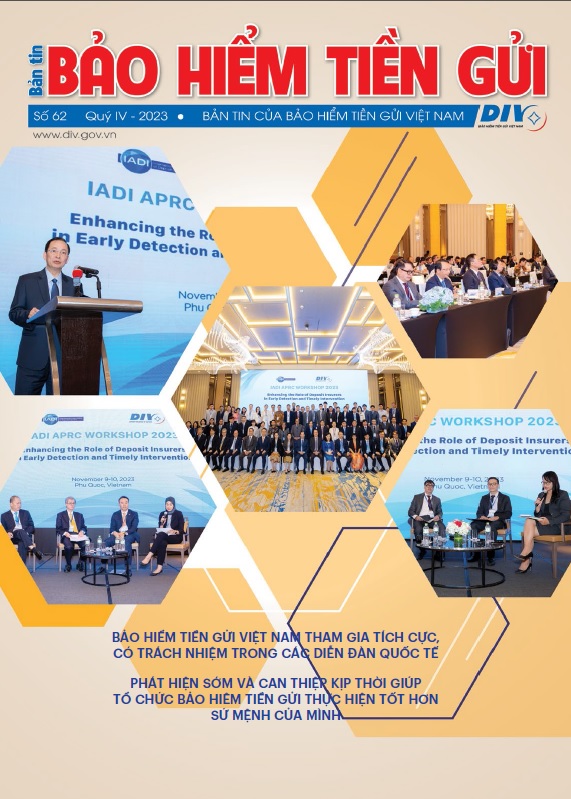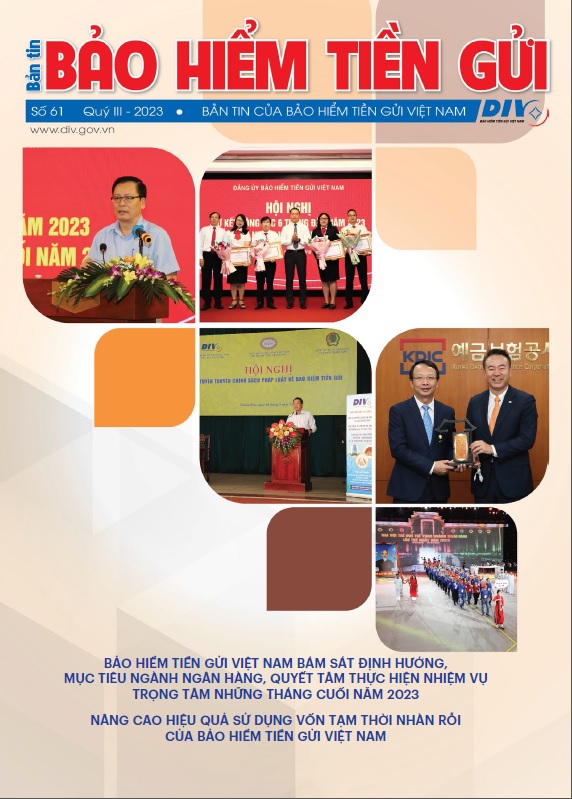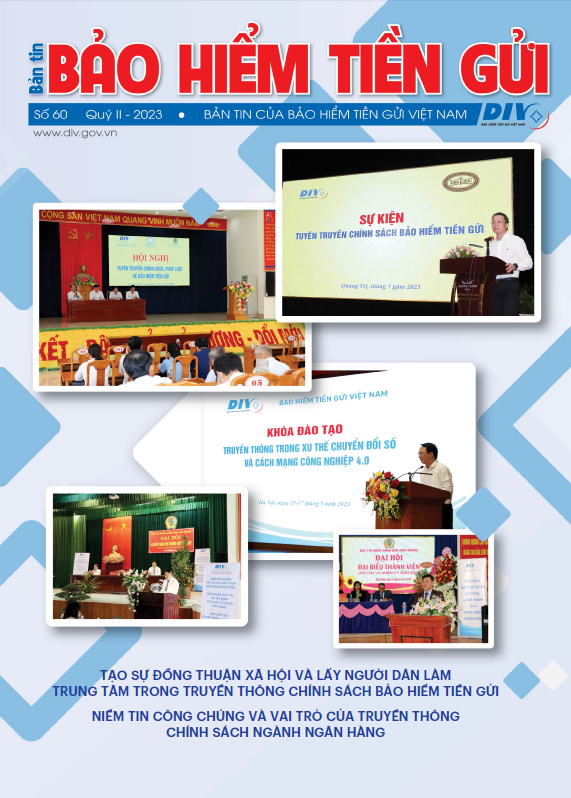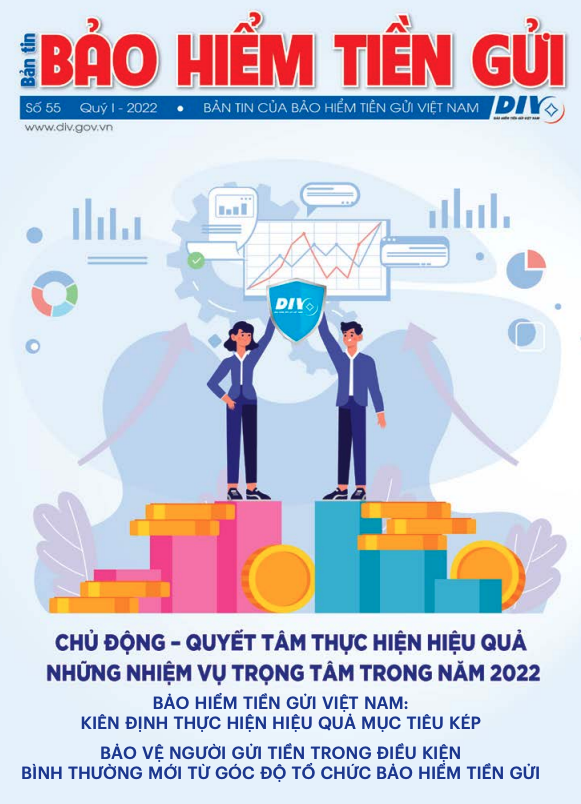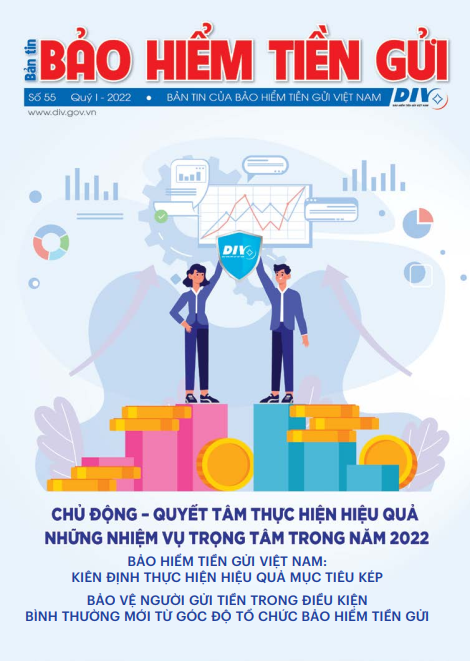The importance of the Strategy for the comprehensive, sustainable and synchronous development of the banking industry
The development strategy of Vietnam's banking industry to 2025, with orientation to 2030 approved under Decision No.986/QD-TTg dated August 8, 2018 (Banking Strategy) of the Prime Minister is the guideline for all activities of the industry, including State management activities of the State Bank of Vietnam (SBV) and business activities of credit institutions; ensure the comprehensive, sustainable and synchronous development of the banking sector during the implementation of the Strategy. In particular, the focus to shape the development steps of the entire industry in the future is also clearly expressed in the Banking Strategy.
In particular, the system of strategic perspectives is considered as the fulcrum of the Strategy, the starter to determine the goals, tasks and solutions. The perspective on the development of the banking industry in the Strategy is built in accordance with the characteristics of the Vietnamese financial system as well as the changing trends of the domestic and foreign socio-economic, closely following the viewpoints and guidelines of the Government, such as: Perfecting the socialist-oriented market economy institution; Continue to restructure, innovate and improve the efficiency of state-owned enterprises; Developing the private economy becomes an important driving force of the socialist-oriented market economy; Improve business environment, enhance national competitiveness; Effectively implementing the process of international economic integration, maintaining socio-political stability in the context of our country joining new generation free trade agreements...
The encouraging results after 3 years of promulgating and implementing the Banking Strategy
It can be affirmed that the identification of development orientations in a clear and specific way, in line with the trends of socio-economic change locally and abroad, closely follows the viewpoints and policies on socio-economic development of the State has helped the banking sector achieve very encouraging initial results, creating a solid basis for the accomplishment of the industry's overall goals. Some of the results include:
The monetary system, banking and operations of credit institutions are the lifeblood of the economy, continuing to play an important role in the overall financial system of Vietnam. The SBV has actively, synchronously and flexibly operated monetary policy tools, closely followed market movements in order to control the currency according to inflation targets and stabilize the market. Monetary policy is closely coordinated with fiscal policy through regular communication and close coordination with ministries and branches on monetary policy administration, prices of goods and services, inflation forecasting, serve as a basis for calculating the dosage and level of price adjustment of goods under State management in accordance with the overall goal of controlling inflation, stabilizing the liquidity of the domestic and foreign currency markets. As a result, average inflation in the period of 2018-2021 remained stable around the target threshold of 4%, lower than the target set by the National Assembly[1]. Credit is managed in accordance with the macro balances and capital absorption capacity of the economy associated with improving credit quality; focus credit on production, business, and priority areas, developing green credit and green banking. Credit for potential risk areas is also strictly controlled and implemented synchronously with solutions to remove difficulties for production and business activities, increasing enterprises' access to capital to black credit. The exchange rate mechanism is flexibly operated, synchronously combined with interest rate instruments and strictly managed foreign exchange activities. The stable foreign currency market has contributed significantly to controlling inflation, stabilizing the macro-economy, ensuring market liquidity, increasing foreign exchange reserves, contributing to increasing the national financial potential to provide a source of intervention when necessary. The gold market is also stable and self-regulating, helping to minimize the market intervention of the SBV.
The legal framework on currency and banking is constantly being improved in accordance with market principles, economic development requirements and best international practices and standards. The SBV has submitted to the Government and the Prime Minister for promulgation many Decrees, Decisions and Circulars, creating an effective legal basis for the SBV to perform the key tasks of restructuring the system of credit institutions; handling non-performing loans; strengthening inspection and supervision activities; administering monetary, credit, foreign exchange, gold, and payment policies... These legal documents all aim to approach international practices and standards and gradually comply with market principles, which has a positive impact on monetary and banking activities, contributing to promoting economic and social development.
Credit institutions of all economic sectors are treated equally, compete according to the law, operate autonomously, and take self-responsibility. The pioneering, key and leading role of domestic credit institutions continues to be affirmed. Up to now, the system of Vietnamese credit institutions is a multi-type and multi-owned system with 7 state-owned commercial banks (including 3 banks that the State buy compulsorily), 28 joint stock commercial banks that are all public companies, 1 cooperative bank and 1,181 People's Credit Funds; 11 100% foreign owned banks and joint venture banks; 48 branches of foreign banks; 49 representative offices; 27 finance and leasing companies; 4 microfinance institutions. Domestic credit institutions have always maintained a key role in mobilizing and allocating credit, providing banking products and services for the socio-economic development of the country.
The SBV plays an important role in creating the monetary and banking business environment; only directs administrative intervention in the money market and banking operations when there is a risk of currency market instability or a threat to the safety of the system and a threat to macroeconomic stability. In operating monetary policy and banking activities, the SBV always minimizes intervention by administrative tools. Accordingly, the SBV has gradually shifted from operating by cash volume to operating by price and used indirect tools. The objective of stably operating the money market is achieved through the flexible management of open market operations; Interest rates are managed in line with macroeconomic developments, inflation, and the money market; the central exchange rate is published daily based on reference to domestic and foreign market movements, macroeconomic and monetary balances and monetary policy objectives. The use of administrative management measures is only applied at special times. In addition, the SBV also promoted the implementation of 3 pillars of administrative reform in the banking industry[2]. As a result, the SBV continues to be the leading unit in the PAR index for five consecutive years, contributing to significantly improving Vietnam's "Access to credit" index. The rate of on-time completion of tasks assigned by the Government and the Prime Minister on the Government Office's inter-track database management system reached 100%.
Encourage innovation, application of science and technology in management, administration, and development of high-quality human resources. The application of science and technology is implemented in both of the management and administration activities of the SBV and the business activities of credit institutions. 100% of the units under the SBV have implemented the processing of documents and work records in the online network environment; 100% of documents sent and received on the National Document Communication Axis are integrated with digital signatures of organizations and individuals of the SBV. Credit institutions have also taken specific steps to implement activities to apply new technical solutions and technologies of Industry 4.0 [3] into business and administration activities. The training and development of high-quality human resources is also focused [4]. Many credit institutions have been developing their own development strategies, in which human resource development and information technology are identified as important foundations for future breakthroughs.
Be consistent with the set goals, tasks and solutions; expeditiously develop and issue departmental strategies/projects
The above achievements are just the beginning of an aspirational new stage of development strategy. In the context that the world and domestic situation continue to pose challenges, unpredictable fluctuations with many new trends, the banking industry needs to be consistent with the set orientations; actively, proactively overcome all difficulties to contribute to the successful implementation of the goal of "Vietnam becoming a developing country, with modern industry, high middle income by 2030 and a developed country, high income by 2045", further affirming the industry's mission and "lifeline" role in the economy.
Accordingly, in the period from now to 2025 and orientation to 2030, in addition to the goals, tasks and solutions identified in the Banking Industry Development Strategy, the formulation and issuance of departmental strategies/projects is a focus that is actively deployed by the units to concretize the development orientation for the assigned unit/field, such as: Information technology development strategy, Payment and settlement system development strategy, Human resource development strategy, development strategies of VAMC, Deposit Insurance, National Payment Corporation of Vietnam (NAPAS)… The implementation of these divisional strategies/projects plays a prerequisite role, contributing to the establishment of a system of specific actions to implement the general development strategic orientations of the whole industry.
Up to now, the SBV has issued/advised on promulgating the Strategy for information technology system development and safety and cybersecurity of the banking system up to 2025, with orientation to 2030 (Decision No. 2655)/QD-NHNN dated December 26, 2019); Development strategy of VAMC to 2025, orientation to 2030 (Decision No.2024/QD-NHNN dated November 27, 2020); Project of "Restructuring the system of credit institutions associated with non-performing loan settlement for the period 2021-2025" (Decision No. 689/QD-TTg dated June 8, 2022). The strategy for the development of payment and settlement systems and the Strategy for human resource development of the banking sector to 2025, with a vision to 2030 are in the process of being researched and finalized. The development strategies of deposit insurance, NAPAS and National Money Printing Factory have been submitted to the competent authorities for signing and promulgation.
Tasks and solutions for the deposit insurer
With the tasks and solutions set for the DIV in the Banking Industry Development Strategy and the Project of "Restructuring the system of credit institutions associated with non-performing loan settlement in the 2021-2025 period", the urgent issuance of the deposit insurance development strategy is an important basis for this organization to well implement the task of protecting the legitimate rights and interests of depositors, contributing to maintaining the stability of the credit institution system, ensuring the safety and soundness of banking activities.
The formulation and issuance of the deposit insurance development strategy has come from a legal requirement (Clause 1, Article 13 of the Law on Deposit Insurance stipulates that the deposit insurer has the right and obligation to develop a development strategy for the SBV to submit to the Prime Minister for approval and implementation), and from practical requirements (domestic and international socio-economic context, development of science and technology, development of deposit insurance organization models in the world), which has led to the requirement that the deposit insurer needs to determine future directions in order to better meet the Core Principles for effective deposit insurance systems).
Accordingly, the content of the deposit insurance development strategy needs to be developed in line with the tasks and solutions in the Banking Industry Development Strategy and the Project of "Restructuring the system of credit institutions in association with non-performing loan settlement in the period of 2021-2025", specifically:
The banking industry development strategy has determined: To develop the DIV under the model of a one-member limited liability company with 100% charter capital held by the State and SBV acts as the owner's representative; fulfill the objective of protecting the legitimate rights and interests of depositors, contributing to maintaining the stability of the credit institution system, ensuring the safe and healthy development of banking activities; Strengthen financial capacity, improve operational capacity, perfect the organizational model, improve staff qualifications, apply modern technology to well perform the tasks of supervision, examination and participation in special control, early detection and warning of potential risks to insured institutions; participate in effective restructuring of weak credit institutions; calculate and collect deposit insurance premiums, manage investment capital, disseminate deposit insurance policies, and pay insurance in accordance with international practices and the provisions of Vietnamese law.
In the project of "Restructuring the system of credit institutions associated with non-performing loan settlement for the period of 2021-2025", the deposit insurer has set out the following requirements: DIV will continue to review, research, amend and supplement the Law on Deposit Insurance and other relevant legal documents in the direction of supplementing the functions and tasks of the DIV to participate in restructuring weak credit institutions; study and amend the Law on Deposit Insurance to use the balance of premiums to resolve weak PCFs... DIV is assigned with special lending to specially controlled credit institutions; buying long-term bonds of supporting credit institutions; participating in assessing the feasibility of the plan to recover the People's Credit Fund, microfinance institutions, financial companies; participating in the formulation of the bankruptcy plan of the specially controlled credit institutions, participating in the Special Control Board etc.
Based on the above requirements, the results achieved in the implementation of the deposit insurance policy, assessment of difficulties and obstacles in the operation as well as opportunities and challenges in the coming time, the deposit insurance development strategy needs to set out orientations and solutions to strengthen the financial and governance capacity of the DIV, contributing to the effective implementation of the tasks specified in the Law on Deposit Insurance and additional tasks in the new period, as well as medium and long-term orientations, better protect the legitimate rights and interests of depositors in the process of restructuring and developing credit institutions in the coming time.
Conclusion
Strategists Joel Ross and Michael Kami of the Center for Management Research and Development in the US when writing about strategy also commented: "Without a strategy, an organization is like a boat without a rudder". For the banking industry in general and the units in particular, the formulation and promulgation of a development strategy, and at the same time, consistently following the strategy's viewpoints, goals, tasks and solutions is absolutely necessary to carry out activities in a synchronous, consistent and systematic manner, bringing the banking industry in general and the DIV in particular to new heights on the path of development and integration.
[1] The average inflation in the years 2018-2021 is 3.54%; 2.79%; 3.23%, 1.84% respectively.
[2] (1) Administrative reform according to the state administrative reform master program; (2) Reforming procedures of the SBV with credit institutions, focusing on operating methods, tightening discipline, administrative discipline and public service in order to effectively promote existing resources, meet the requirements of public work, ensuring timeliness, quality and efficiency; (3) Reform procedures of credit institutions with businesses and people in the direction of simplification, reducing service fees, improving transparency and credit accessibility, creating favorable conditions for organizations and individuals in the banking sector. transactions with credit institutions, directly supporting businesses
[3] Big Data, artificial intelligence, and cloud computing
[4] The SBV has completed the development and promulgation of the Competency Framework and Program Framework for all four main areas of expertise of the SBV and the Framework on preparing resources, appointing and nominating representatives to participate in the study, internship, work, research, secondment and exchange of cadres at international banking and financial institutions; Competency framework, training program framework for key positions in the operation of credit institutions.
